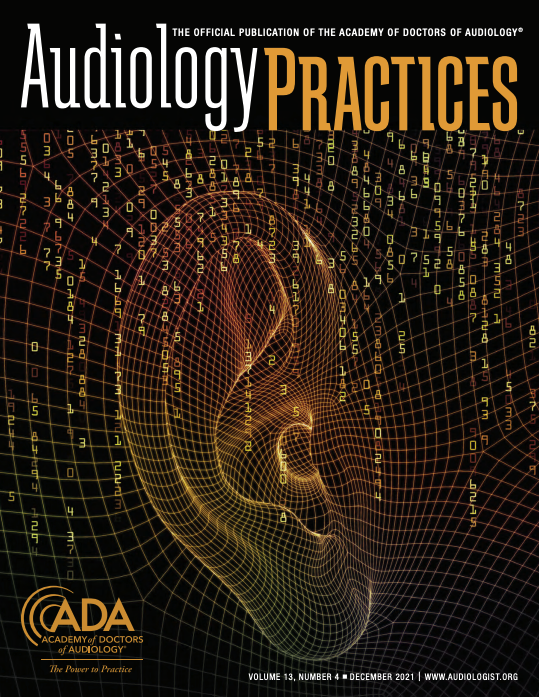February 18, 2022. Audiology Practices, the quarterly journal of the Academy of Doctors of Audiology (ADA), recently published a special issue focused on current innovations in modern hearing aids. Each hearing aid manufacturer was asked to contribute an article on one of their signature features. The ADA has made these articles open access on its website.
Go to https://www.audiologypractices.org/_resources/documents/AP-Winter2021.pdf to download these articles.
The articles and their contributors include: 
Introduction: Keeping Up with Moore’s Law - BRIAN TAYLOR, AuD, Editor, Audiology Practices
Why Place a Microphone in the Ear Canal? A Review of the M&RIE Receiver - LAUREL CHRISTENSEN, PhD and JENNIFER SCHUMACHER, AuD, GN Resound
Deep Neural Networks and Sound Quality - DOUGLAS L. BECK, AuD and VIRGINIA RAMACHANDRAN, AuD, PhD, Oticon
Acoustic Coupling: Fixed vs. Dynamic Venting - MEGAN ADLER, AuD and DAVID TAYLOR, AuD, Phonak
Split-Processing: A New Technology for a New Generation of Hearing Aids - ERIC BRANDA AuD, PhD, Signia
Widex: Optimizing Sound in Signal Processing and Hearing Aid Fitting - LAURA WINTHER BALLING, PhD and DANA HELMINK, AuD, Widex
About ADA
The Academy of Doctors of Audiology (ADA) is dedicated to the advancement of practitioner excellence, high ethical standards, professional autonomy and sound business practices in the provision of quality audiologic care.
ADA was founded by nine practitioners in 1977, as the Academy of Dispensing Audiologists, to foster and support the professional dispensing of hearing aids by qualified audiologists in rehabilitative practices. Later, in 1988, ADA developed the concept of the Doctor of Audiology (Au.D.) degree and provided much of the energy behind the movement for the transition of audiology to a doctoring healthcare profession. This goal, as well, has been largely met, as the Au.D. is now the minimum degree for audiology practice offered by educational institutions in the United States. For more information about the ADA, visit www.audiologist.org

